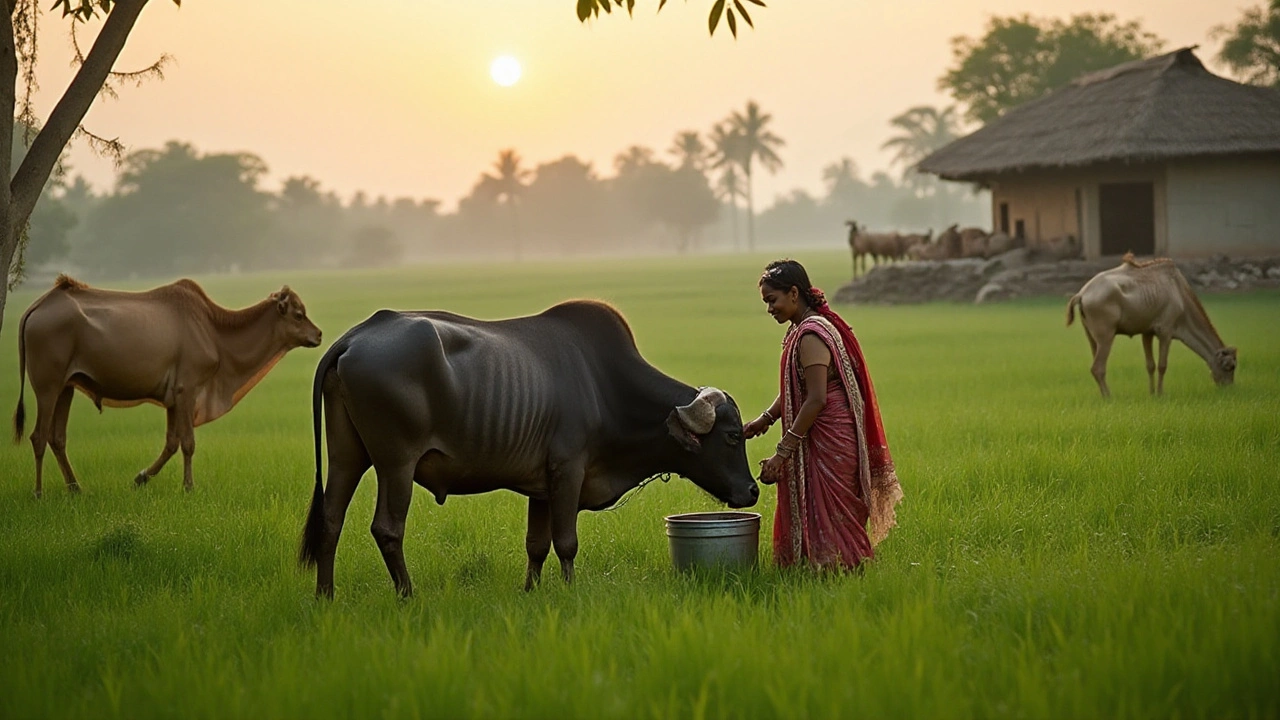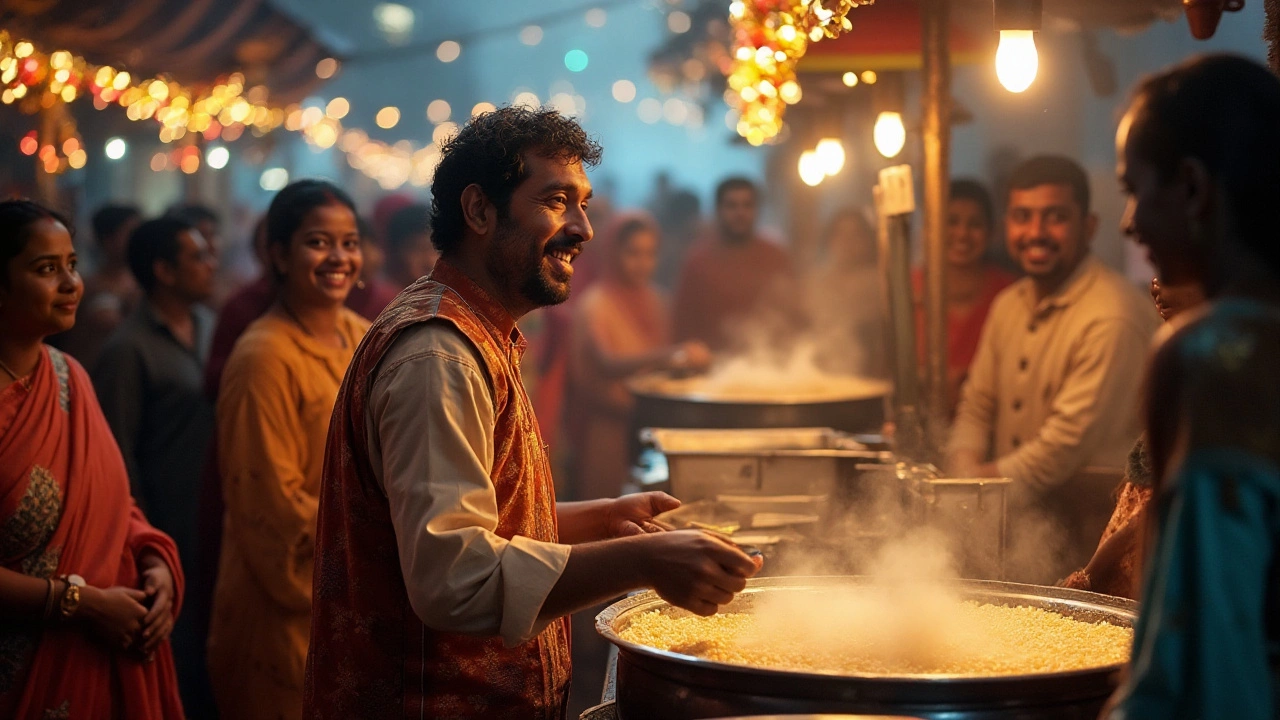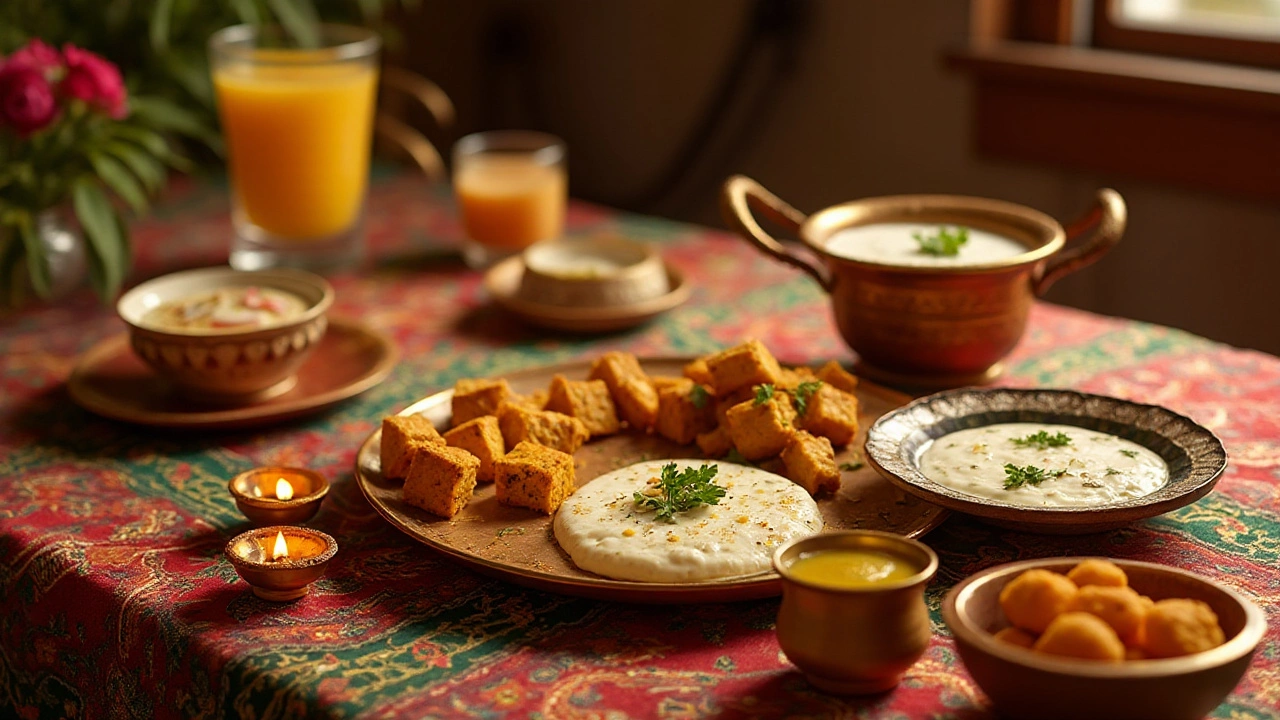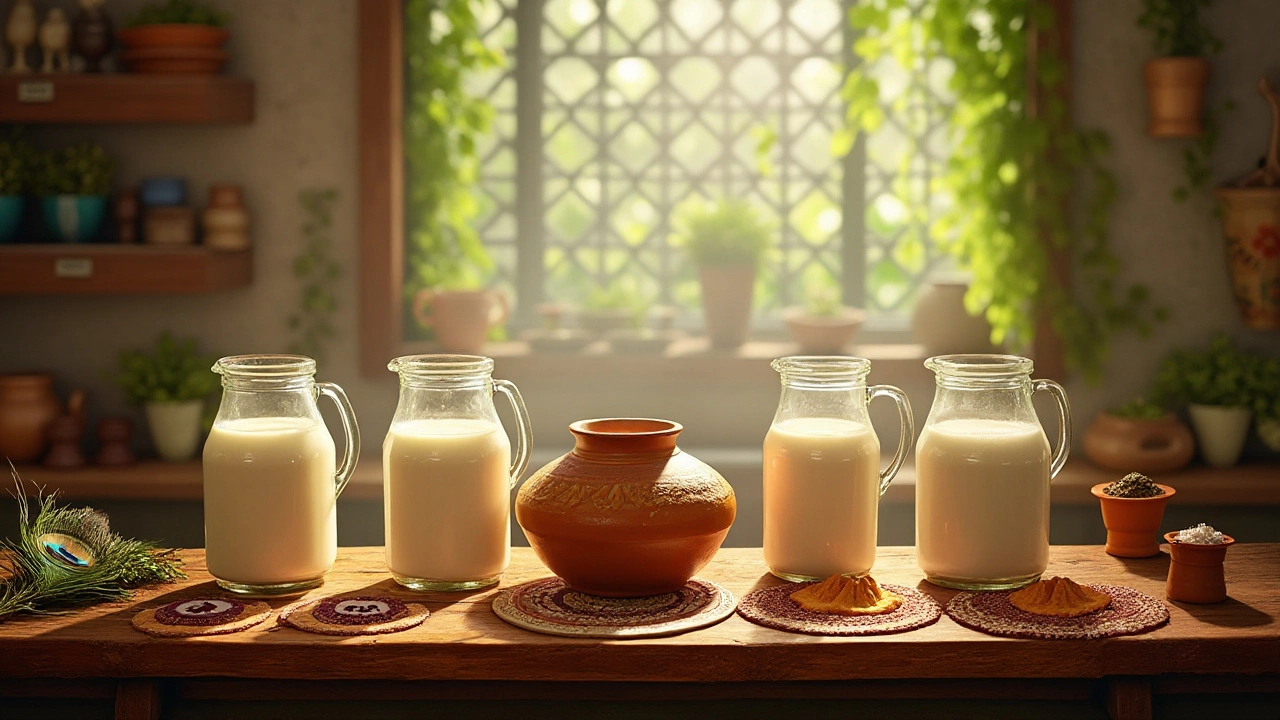13 Jan 2025
- 0 Comments
Milk in India is more than just a beverage; it is a cornerstone of the country's culinary and cultural identity. Whether sipped on its own or as a base for a myriad of dishes, milk's ubiquity in Indian kitchens cannot be overstated. Each region boasts its own variety, offering a distinctive taste and enriching countless recipes.
While cow and buffalo milk are dominant, locals also relish the unique flavors of camel and goat milk where availability allows. These different types of milk not only satisfy the curious palate but also contribute significantly to the nutritional needs of the population.
In this article, we journey through the multifaceted world of Indian milk, exploring its types, benefits, and some exciting recipes that make the most of its creaminess and rich texture. Join us as we unlock the secrets of a staple ingredient in Indian cuisine and culture.
- Traditional Types of Milk in India
- Nutritional Benefits and Uses
- Popular Indian Milk Recipes
- Cultural Significance and Practices
Traditional Types of Milk in India
When it comes to Indian milk, the diversity is truly fascinating. In many parts of India, cow's milk is considered a staple due to its widespread availability and balanced nutritional profile. Known for being rich in calcium and proteins, it forms the foundation of countless dairy products such as yogurt and paneer. Additionally, cow's milk often plays a central role in religious rituals and is deeply embedded in the culture.
Buffalo milk, on the other hand, is famous for its creamy texture and higher fat content, making it ideal for creating indulgent desserts like khoa or rasmalai. Buffaloes are more suited to the humid climate of India, and their milk is cherished for its thick consistency. The deeper flavor profile of buffalo milk is often preferred for traditional sweets, adding both richness and body to any recipe.
In certain regions, particularly Rajasthan and Gujarat, camel milk is cherished for its medicinal properties and is believed to be beneficial for those with diabetes. It's known to have lower lactose levels and bring a nutty sweetness that distinguishes it from its counterparts. A study published showed that camel milk not only has antibacterial properties but is also packed with vitamins and minerals.
Dr. Kumar, a leading nutritionist, states, "Camel milk, sourced predominantly from the arid regions of India, provides a significant boost to immunity and is a rich source of iron."
Even goat milk has found its niche, especially in rural areas. Often valued for being easily digestible, it provides a milder alternative to cow's milk. High in A2 casein, goat milk matches a similar structure to human milk, making it gentle on the gut and a popular choice for infants and those with milk sensitivities.
For those interested in artisan dairy, there has been a growing curiosity towards A2 milk. Primarily sourced from specific indigenous cows like the Gir and Sahiwal breeds, this type of milk is considered easier to digest and has been making waves in urban markets for its touted health benefits. As awareness of A1 and A2 beta caseins spreads, consumers are increasingly discerning about their milk choices, looking for options that align with individual health needs.

Nutritional Benefits and Uses
In India, milk is not just another dietary item; it’s a nutritional powerhouse, integral to daily consumption and ceremonial feasts alike. It's fascinating to explore the nutritional benefits different kinds of milk bring to the table. Cow milk, the most prevalent variety, is a fantastic source of calcium, which plays a critical role in maintaining bone health. It also provides essential vitamins like B12 and riboflavin that are crucial for energy production and DNA synthesis. Meanwhile, buffalo milk, which is richer in fat content than cow milk, offers a creamier option, ideal for making delectable Indian sweets like malai kulfi and rasgulla.
Delving deeper into traditional Indian milk varieties, camel milk is uniquely rich in minerals and contains three times the vitamin C of cow's milk, making it a potent immune booster. In regions like Rajasthan and Gujarat, camel milk is often utilized for its medicinal properties, believed to help manage diabetes and high cholesterol levels. Another noteworthy mention is goat milk, which is celebrated for its higher digestibility due to the smaller fat globules present. This makes it an excellent alternative for those with lactose sensitivity, providing a solid foundation for dishes such as paneer and lassi.
The uses of milk in Indian cuisine are as diverse as its nutritional benefits. From serving as the base of savory dishes like kheer to sweetening a chai tea, the adaptability of milk is unmatched. Given the cultural emphasis on freshly prepared dairy products, many households still prefer homemade yogurt, butter, and ghee from raw milk. Notably, several traditional practices revolve around milk, reaffirming its significance. A quote from the renowned nutritionist Rujuta Diwekar emphasizes the cultural dimension:
"In India, our relationship with milk is spiritual; it nourishes more than just our body, it feeds our very spirit."
To highlight the nutritional values, let's look at a brief comparison of commonly consumed milk types in India using the table below:
| Milk Type | Calories (per 100ml) | Calcium (mg) | Fat Content (%) |
|---|---|---|---|
| Cow | 68 | 120 | 3.9 |
| Buffalo | 97 | 200 | 6.5 |
| Camel | 107 | 180 | 3.1 |
| Goat | 69 | 100 | 4.2 |
As the table demonstrates, choosing different types of milk can cater to specific dietary needs, reaffirming their place in the balanced diet most Indians strive to maintain. Armed with such broad diversity, the possibilities milk offers for nutrition and taste are virtually boundless, whether you're enjoying a comforting glass or incorporating it into a luscious dessert.

Popular Indian Milk Recipes
In Indian kitchens, milk often takes center stage, bringing its creamy essence to a diverse array of traditional recipes. From sweets that melt in your mouth to savory delights, milk's versatility is celebrated across the country. Let's delve into some cherished dishes that showcase the best of Indian milk culinary arts.
One of the most beloved Indian desserts is the earthy and nutty kheer. This rich rice pudding combines milk, rice, and sugar, flavored with cardamom, saffron, and an assortment of nuts. Cooking kheer demands patience as the milk reduces slowly, allowing its flavors to deepen. Many households add raisins for sweetness and a slight tang, drawing out the subtle undertones of the saffron. Kheer's comforting consistency and fragrant aroma make it a festive favorite, often served during important celebrations and family gatherings.
Another staple of Indian sweets is gulab jamun, which are soft fried dumplings made from khoya or milk powder, drenched in a sweet rose-scented syrup. This dessert traces back to medieval India, and its indulgence hasn't waned since. When fried to perfection, these golden balls develop a smooth, melt-in-the-mouth texture that stands as a testament to traditional Indian confectionery skills. Gulab jamun's popularity has crossed regional boundaries, making it a must-have dessert at weddings and festivities.
For those preferring savory delights, paneer butter masala is an exemplary dish featuring Indian milk. Paneer, a fresh cheese made by curdling heated milk with lemon or vinegar, is simmered along with rich butter and a blend of spices in a velvety tomato-cream gravy. This vegetarian favorite is a cornerstone in North Indian cuisine, served alongside naan or basmati rice. The lush gravy perfectly cradles the firm yet soft paneer cubes, creating a harmonious blend of textures and flavors that is truly unforgettable.
Additionally, India presents an assortment of lesser-known but equally delightful milk beverages. Take for instance lassi, a yogurt-based drink that can be both sweet and salty, depending on the region. The sweet version is enhanced with fruits like mango, while the salted variant is spiced with toasted cumin and coriander. On hot summer days, a cool glass of lassi offers a refreshing respite, blending the tangy richness of yogurt with delightful add-ons for a delightful experience.
Eating a meal without milk, the white, yellow, salted butter, is like listening to sweet music sans a single note. - Rabindranath Tagore
To top off this delicious lineup, don't forget the holiday classic, rasmalai. This sweet offers a decadent experience with its delicate milk dumplings soaked in flavored milk, often enriched with cream and garnished with pistachios. Its strikingly soft texture is achieved when the dumplings made of chenna are slow-cooked, absorbing the aromatic milk till it turns soft and feathery. No special occasion or family celebration would be considered complete without this exquisite sweet, a true gem in the treasure trove of Indian milk recipes.

Cultural Significance and Practices
Milk has woven itself into the fabric of Indian culture so deeply that it plays a pivotal role in religious, social, and daily practices. The Vedas, one of the oldest sacred texts of Hinduism, mentions Indian milk as both a gift from the gods and a nourishing food. In many rituals and ceremonies, milk is used in offerings known as 'abhishekam,' where it is poured over idols to symbolize purity and reverence. This practice underscores the sacredness attributed to dairy and its significance transcends dietary benefits, touching spiritual realms.
In Indian households, milk is synonymous with hospitality. Offering a guest a glass of warm milk or a comforting cup of masala chai is more than just a gesture of kindness—it's an invitation to partake in age-old traditions that cherish warmth and nurturance. The milk-based drink called 'lassi' has been a favorite for centuries, enjoyed by royalty and common folk alike, often accompanying meals as a cooling refreshment. The myriad forms in which milk appears in Indian daily life highlight its versatility and cultural importance.
In agriculture-driven communities, the cow is revered not only as a source of cow milk but also as a symbol of life and fertility. The reverence for cows is enshrined in law and tradition, impacting both dietary choices and economic practices. It is not uncommon to find families giving their cows a special place in their household, treating them as part of the family. A popular folk tale tells of Lord Krishna, who himself was a cowherd, underscoring this deep-seated admiration and connection.
To understand the socioeconomic impact of milk in India, it is important to note that the country leads as the largest producer globally, with an annual production surpassing 200 million metric tons. This achievement not only fulfills domestic needs but also generates income for millions of dairy farmers reliant on this industry for their livelihood. A diverse range of milk products, from ghee to paneer, further enriches the culinary landscape and creates employment opportunities in the processing sector.
As noted by the National Dairy Development Board, "The role of milk extends beyond nutrition, encompassing societal and economic dimensions that contribute significantly to rural prosperity."
Even in modern times, the ubiquitous presence of milk seems unshakeable. Yet, the evolution from traditional practices to innovation is evident as plant-based alternatives like almond and soy milk gain popularity among health-conscious urban populations. Still, the heart of Indian society continues to beat in tandem with the rhythms of traditional dairy practices, celebrating the indispensable role of milk in shaping culinary traditions and cultural narratives.
